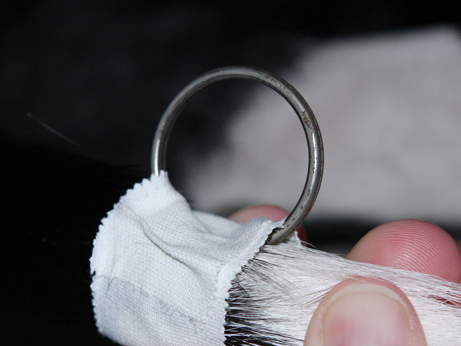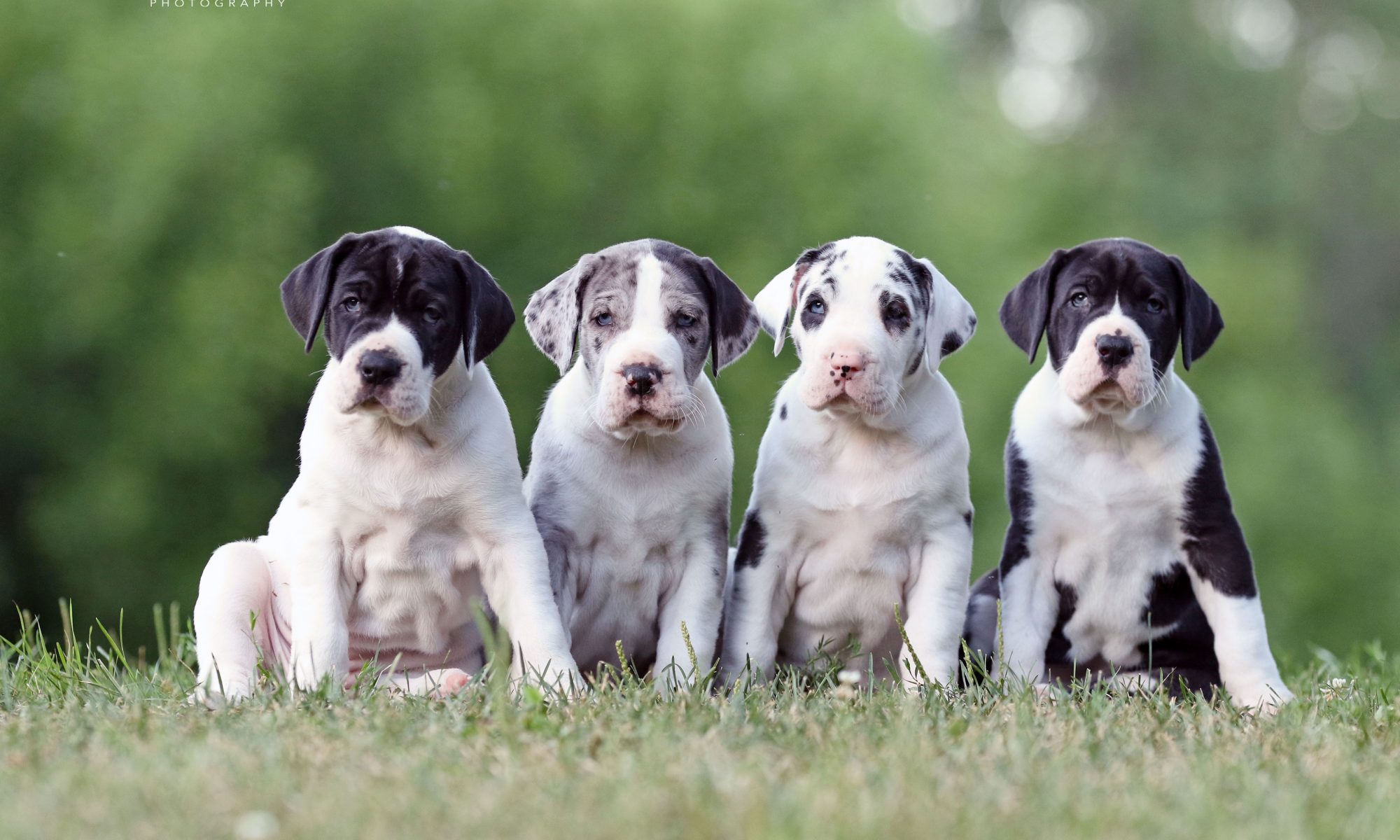Danes are notorious for “happy tail” – they wag their powerful tails hard and sometimes it smacks walls and other objects, causing the end of the tail to break open. While this doesn’t normally seem to cause the dogs discomfort, it’s not very fun for the owner. Putting blood on the tip of a wagging tail equals blood spatters on every surface in a room in mere moments (hydrogen peroxide works wonders in getting blood out of fabrics).
Not all Danes have this issue, but it seems once a dog has done it, they will continue to experience issues with it. In part, because the more the tail gets injured, the easier it is to break open again. And, in part, because the ones that break it open once are likely to be the type of waggers that continually have the issue.
For owners dealing with happy tail, it does not always result in amputation.
You will quickly learn that attempting to tape just the end of the tail is worthless. The taping method I have used, a tried and true method, worked really well. The concept is to tape the dog’s tail up under their body, as if they were tucking their tail. This keeps them from being able to whip the end of the tail around, allowing the tail a chance to heal. You leave the injured part of the tail free to breath.
You’ll need an O ring, swivel clip, some fabric to create a “belt” (I used the waist part of an old sweatshirt) and some cloth tape.



You can unclip the tail when the dog goes out to potty, although the dog will move their tail to the side, so I typically did not unclip it.
Get the tail taped up as soon as there is an issue and leave it taped for a couple of weeks after you think it is healed. A dog is more apt to break open the tail again if it isn’t healed well. There is the possibility that you’ll end up doing a fair amount of this taping method off and on throughout the dog’s life. But, you stand a good chance at being able to save the tail and your sanity, as blood spattered walls are no fun. For those showing their Danes, a docked tail is a disqualification in our breed, so amputation means the end of a show career.
In addition to taping while the tail is healing, there are other preventative ideas that help. If the dog is breaking the tail open while kenneled, padding the sides of the crate/kennel might help. Teaching the dog to sit when greeting you can help as well.
It should be noted that if the tail is severely damaged, sometimes the best course of action is amputation. The dogs and owners are often happier post-amputation, especially when it has been a long drawn out struggle with the tail.
